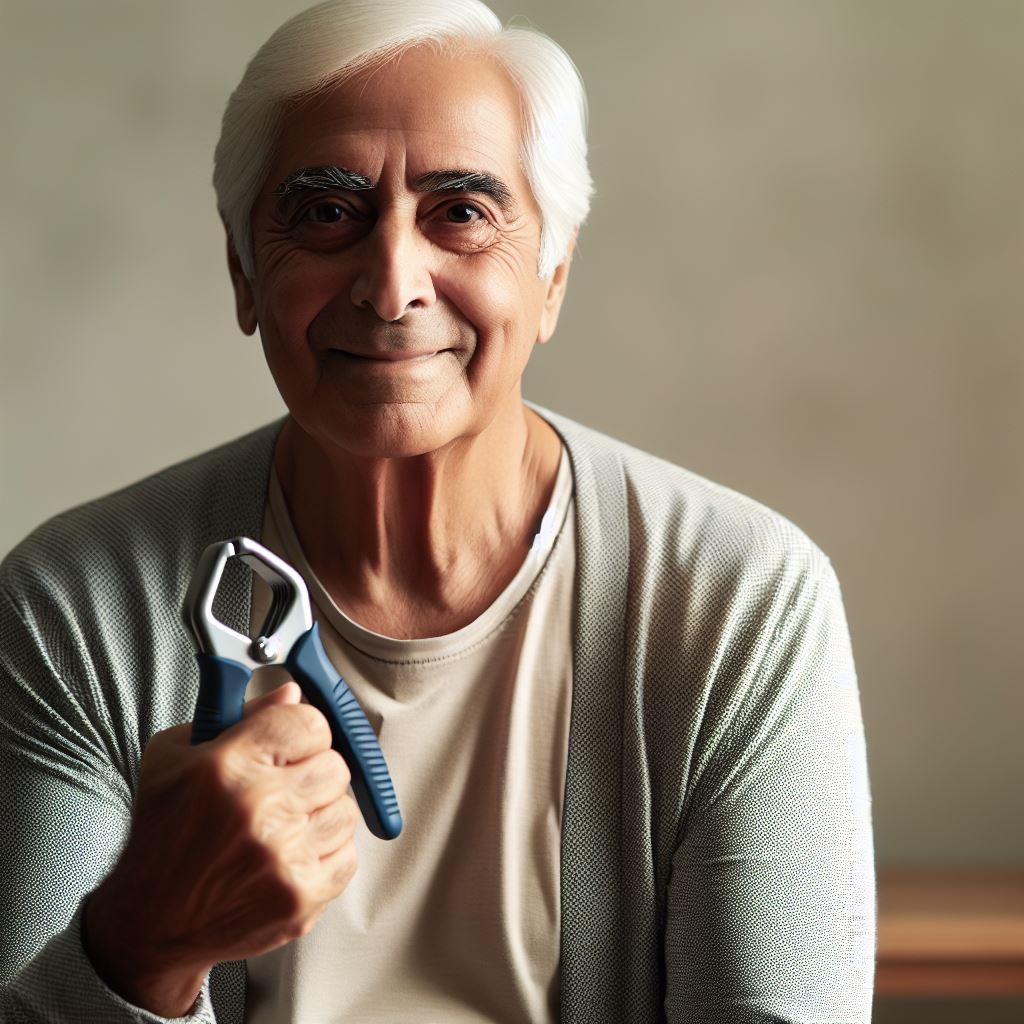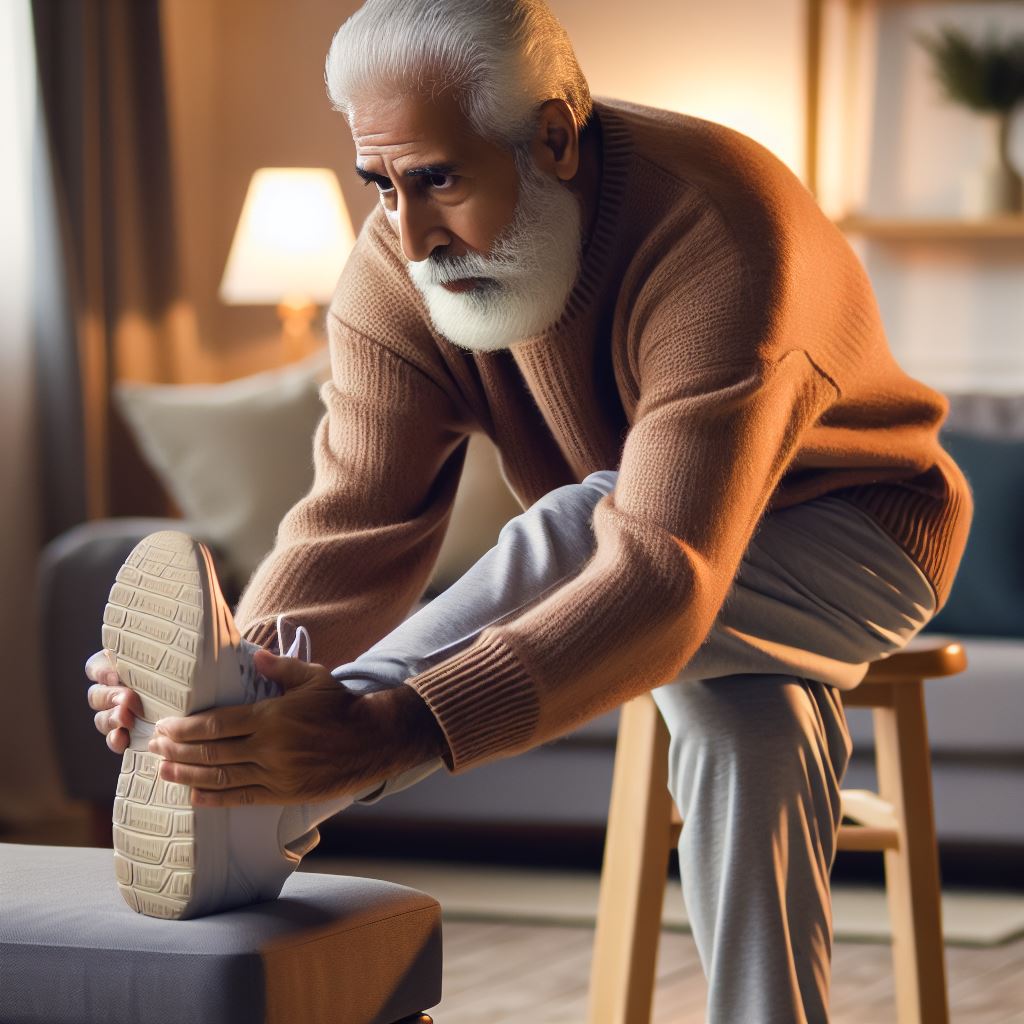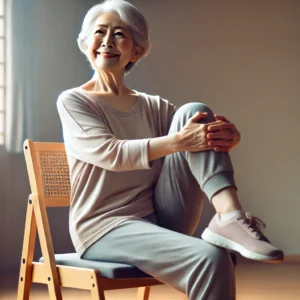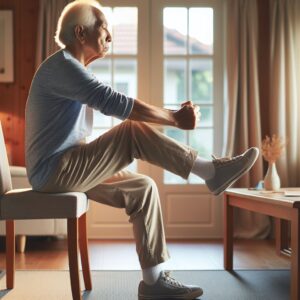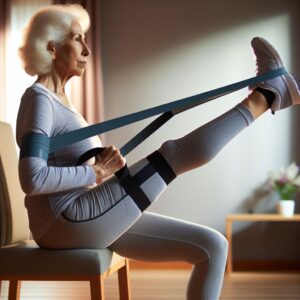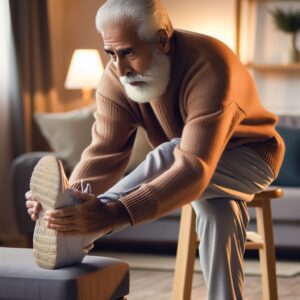Introduction
Falls are a significant concern for seniors, often leading to serious injuries and a decline in overall health. One effective way to reduce the risk of falls is by improving grip strength. Grip strength exercises for seniors not only enhance their ability to hold onto objects securely but also contribute to better balance and stability. In this article, we will explore the importance of grip strength, various exercises to improve it, and how these exercises can be integrated into a daily routine to prevent falls.
The Importance of Grip Strength in Fall Prevention
Grip strength plays a crucial role in daily activities, from opening jars to holding onto railings. For seniors, maintaining strong grip strength can be the difference between a minor stumble and a serious fall. Research has shown that seniors with stronger grip strength are less likely to experience falls, making it an essential component of fall prevention strategies.
The Connection Between Grip Strength and Overall Health
Grip strength is often considered a marker of overall health. Studies have found that individuals with stronger grip strength tend to have better cardiovascular health, lower risk of chronic diseases, and improved cognitive function. For seniors, this means that improving grip strength can have far-reaching benefits beyond just fall prevention.

How Grip Strength Affects Balance and Stability
Strong grip strength helps seniors maintain their balance, especially when navigating uneven surfaces or using assistive devices. When grip strength is weak, seniors may struggle to hold onto railings or support themselves during a fall, increasing the risk of injury. By improving grip strength, seniors can enhance their ability to stabilize themselves and reduce the likelihood of falls.
Benefits of Grip Strength Exercises for Seniors
- Improved Balance and Stability: Stronger grip strength helps seniors maintain their balance, especially when navigating uneven surfaces or using assistive devices.
- Enhanced Daily Functionality: Tasks such as carrying groceries, opening doors, and using tools become easier with improved grip strength.
- Increased Confidence: Seniors who feel secure in their ability to hold onto objects are more likely to engage in physical activities, reducing the risk of falls.
- Better Joint Health: Regular grip strength exercises can help improve joint health and reduce the symptoms of arthritis.
- Enhanced Muscle Strength: Grip strength exercises also target the muscles in the hands, wrists, and forearms, contributing to overall muscle strength.
Types of Grip Strength Exercises for Seniors
1. Hand Grippers
Hand grippers are simple devices that can be squeezed to strengthen the muscles in the hands and forearms. They come in various resistance levels, making them suitable for seniors of all strength levels. To use hand grippers, seniors should start with a low resistance level and gradually increase as their strength improves.
2. Finger Extensions
Finger extensions involve stretching the fingers apart and then bringing them back together. This exercise helps improve the flexibility and strength of the fingers. Seniors can perform finger extensions using resistance bands or simply by stretching their fingers against a flat surface.

3. Wrist Curls
Wrist curls can be performed with light weights or resistance bands. This exercise targets the muscles in the forearms, enhancing grip strength. To perform wrist curls, seniors should sit with their forearms resting on a table or their thighs, holding a weight or resistance band. They should then curl their wrists upward and slowly lower them back down.
4. Ball Squeezes
Using a softball, seniors can perform ball squeezes to strengthen their grip. This exercise is particularly beneficial for those with arthritis or joint pain. To perform ball squeezes, seniors should hold a softball in one hand and squeeze it as hard as they can for a few seconds before releasing it.
5. Towel Wringing
Towel wringing involves twisting a towel as if wringing out water. This exercise targets the muscles in the hands and forearms, improving grip strength. Seniors can perform towel wringing by holding a towel with both hands and twisting it in opposite directions.
6. Rubber Band Stretches
Rubber band stretches involve placing a rubber band around the fingers and stretching it outward. This exercise helps improve the strength and flexibility of the fingers. Seniors can perform rubber band stretches by placing a rubber band around their fingers and stretching it as far as they can before releasing.
How to Incorporate Grip Strength Exercises for Seniors into Daily Routine
1. Consistency is Key
To see significant improvements, seniors should aim to perform grip strength exercises regularly. Setting aside a few minutes each day can lead to noticeable benefits over time. Consistency is crucial for building and maintaining strength, so seniors should make grip strength exercises a part of their daily routine.
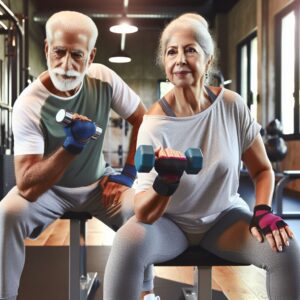
2. Start Slow and Gradually Increase Intensity
It’s important for seniors to start with exercises that match their current strength level and gradually increase the intensity as their grip strength improves. Starting with low-resistance exercises and gradually progressing to more challenging ones can help prevent injuries and ensure steady improvement.
3. Combine with Other Fall Prevention Strategies
Grip strength exercises should be part of a comprehensive fall prevention plan that includes balance training, flexibility exercises, and strength training. By combining grip strength exercises with other types of physical activity, seniors can improve their overall fitness and reduce their risk of falls.
4. Incorporate Exercises into Daily Activities
Seniors can incorporate grip strength exercises into their daily activities by using hand grippers while watching TV, performing finger extensions while reading, or doing ball squeezes during phone calls. By integrating exercises into their daily routine, seniors can make it easier to stay consistent and see results.
Safety Tips for Seniors Performing Grip Strength Exercises
1. Consult with a Healthcare Professional
Before starting any new exercise regimen, seniors should consult with their healthcare provider to ensure the exercises are safe and appropriate for their individual health conditions. A healthcare professional can provide personalized recommendations and help seniors avoid exercises that may exacerbate existing conditions.
2. Use Proper Equipment
Using the right equipment, such as hand grippers and resistance bands, can help prevent injuries and ensure effective workouts. Seniors should choose equipment that is comfortable to use and appropriate for their strength level.

3. Listen to Your Body
Seniors should pay attention to their body’s signals and avoid overexertion. If any exercise causes pain or discomfort, it should be stopped immediately. It’s important to perform exercises with proper form and to take breaks as needed to prevent strain and injury.
4. Warm Up Before Exercising
Warming up before performing grip strength exercises can help prevent injuries and improve performance. Seniors can warm up by doing light aerobic activity, such as walking or marching in place, for a few minutes before starting their exercises.
5. Stay Hydrated
Staying hydrated is important for overall health and can help improve exercise performance. Seniors should drink plenty of water before, during, and after their workouts to stay hydrated and prevent muscle cramps.
Success Stories: Seniors Who Improved Their Grip Strength and Prevented Falls
Sharing success stories can be a powerful motivator for seniors. Highlighting individuals who have successfully improved their grip strength and reduced their risk of falls can inspire others to take action. Here are a few examples:

1. Mary’s Story
Mary, a 75-year-old retiree, struggled with weak grip strength and frequent falls. After incorporating grip strength exercises into her daily routine, she noticed a significant improvement in her ability to hold onto objects and maintain her balance. Mary now feels more confident and has experienced fewer falls.
2. John’s Story
John, an 80-year-old grandfather, was determined to improve his grip strength after a fall left him with a broken wrist. With the help of his physical therapist, John began performing grip strength exercises regularly. Over time, his grip strength improved, and he regained his ability to perform daily tasks with ease. John now enjoys playing with his grandchildren without fear of falling.
3. Susan’s Story
Susan, a 70-year-old avid gardener, found that her weak grip strength was affecting her ability to tend to her plants. After starting a grip strength exercise program, Susan noticed a significant improvement in her grip strength and overall hand function. She can now enjoy gardening without difficulty and has experienced fewer falls.
Conclusion
Grip strength exercises for seniors are a vital component of fall prevention. By incorporating these exercises into their daily routine, seniors can improve their balance, enhance their daily functionality, and increase their confidence. With consistency and proper guidance, seniors can significantly reduce their risk of falls and enjoy a safer, more active lifestyle. Remember, it’s never too late to start improving grip strength and taking steps toward a healthier, fall-free future.
